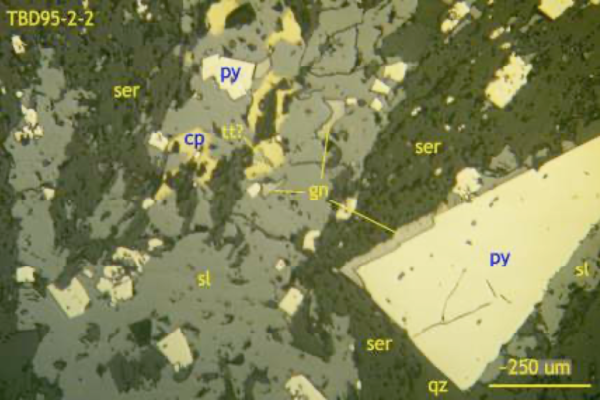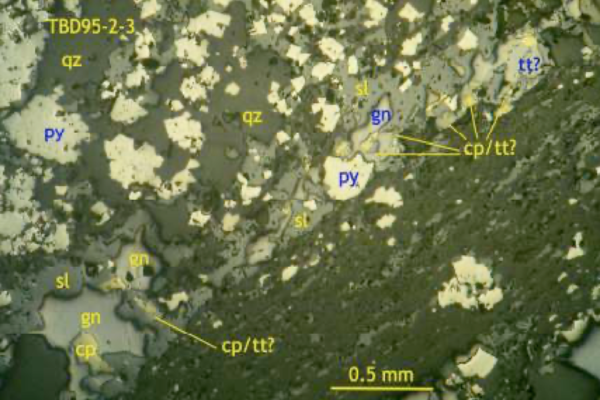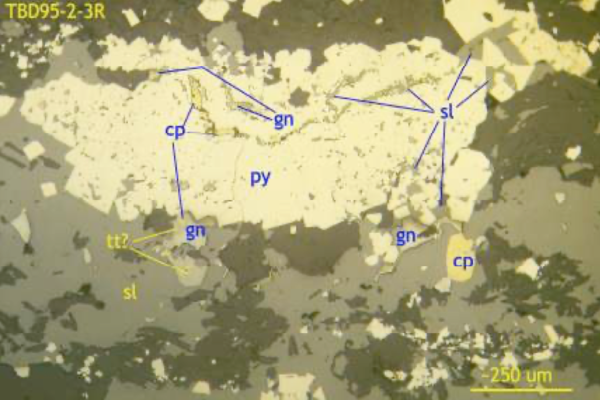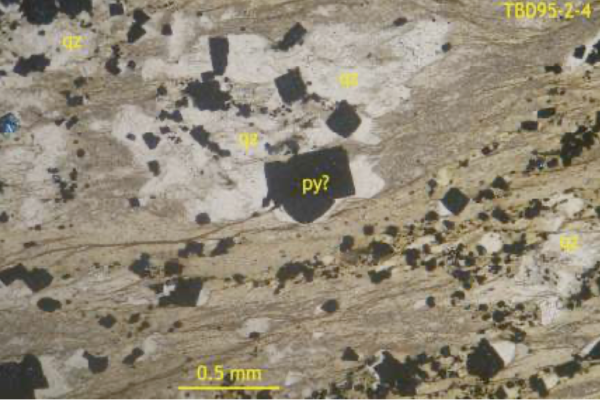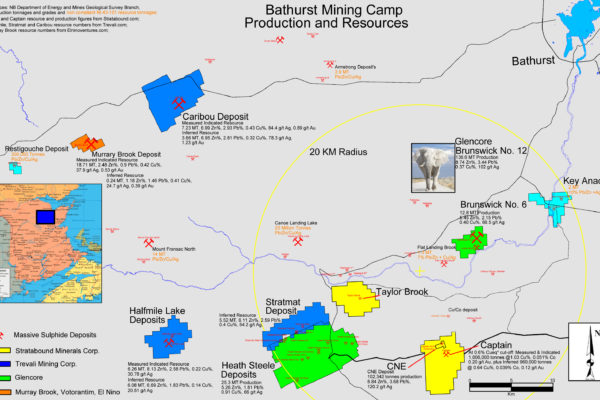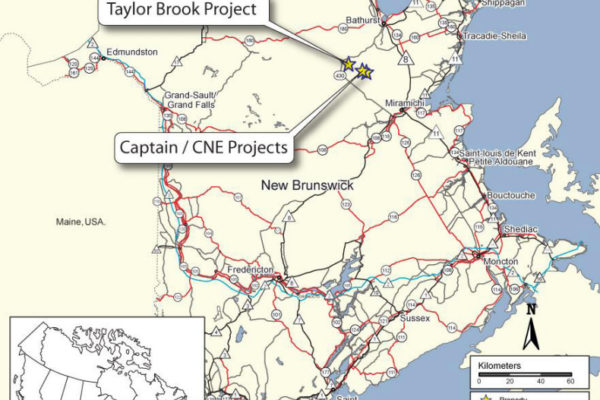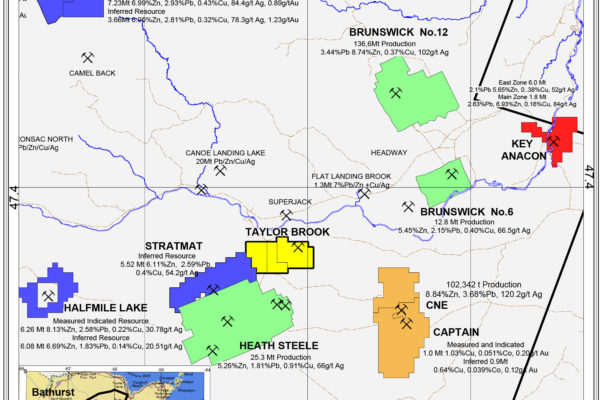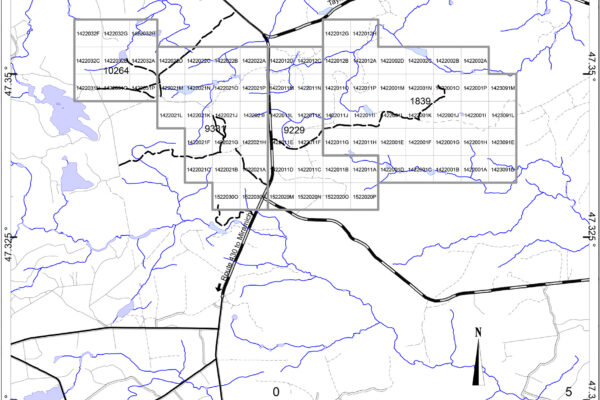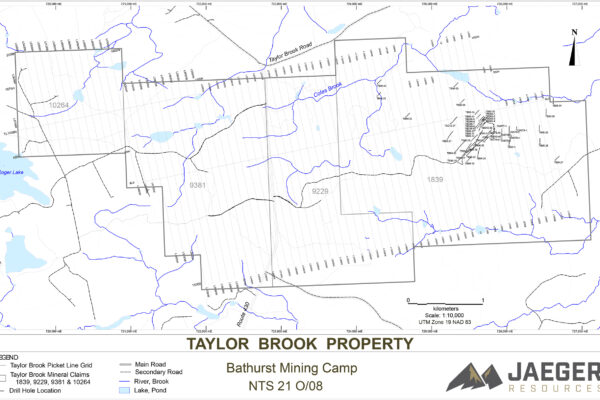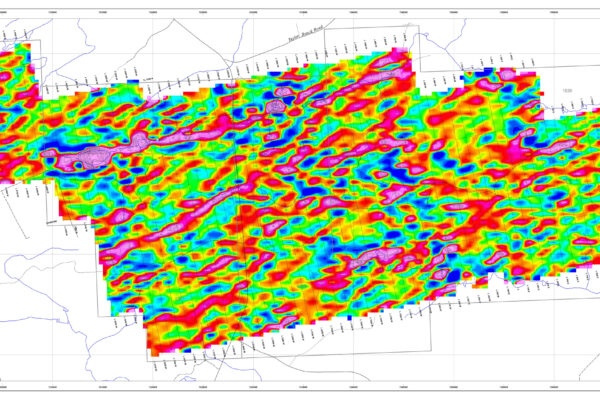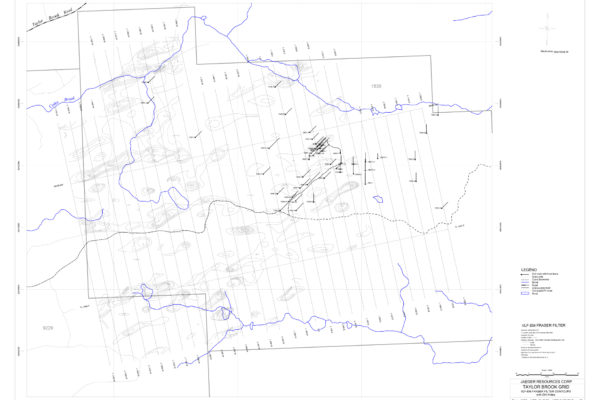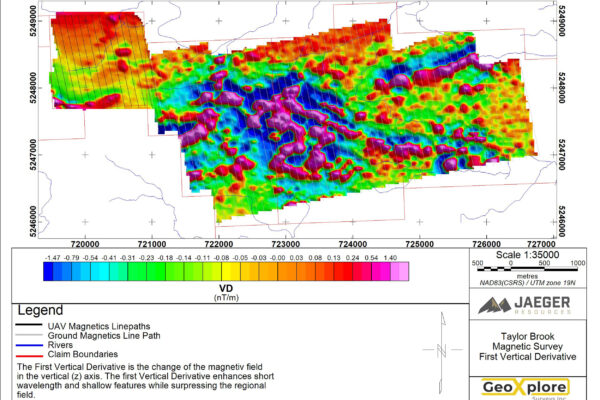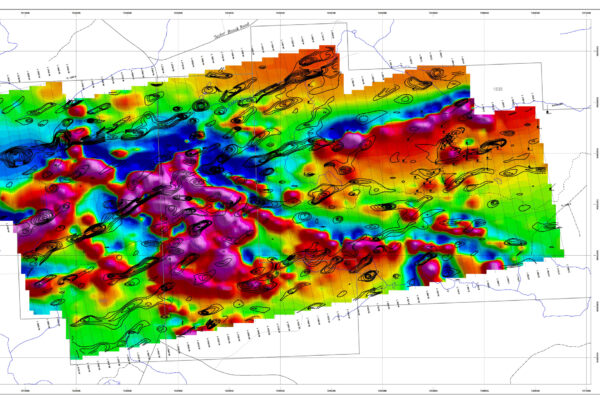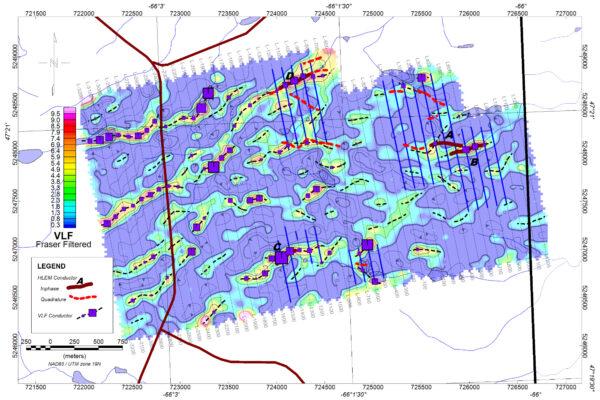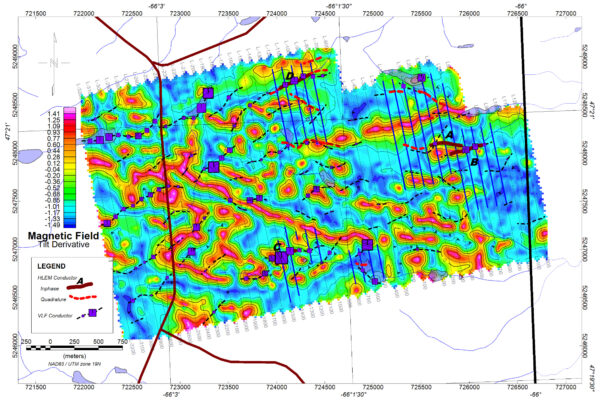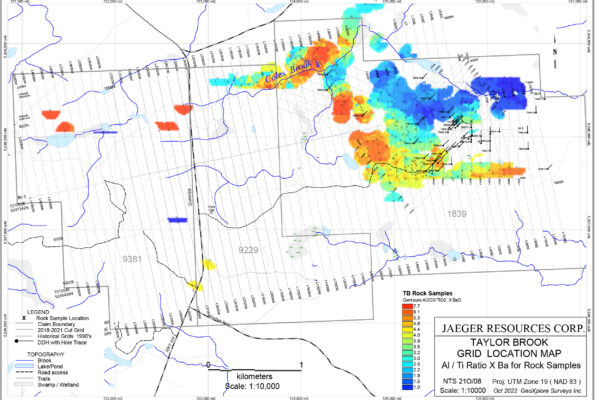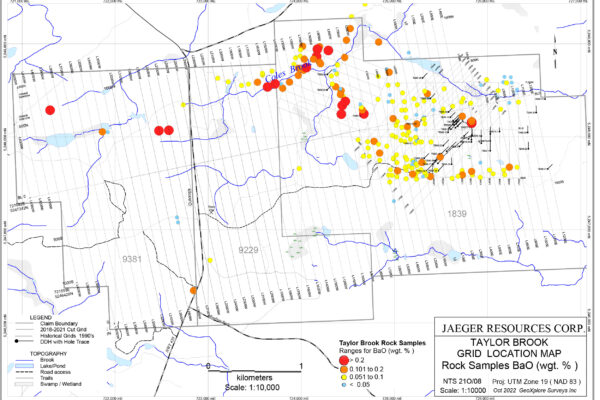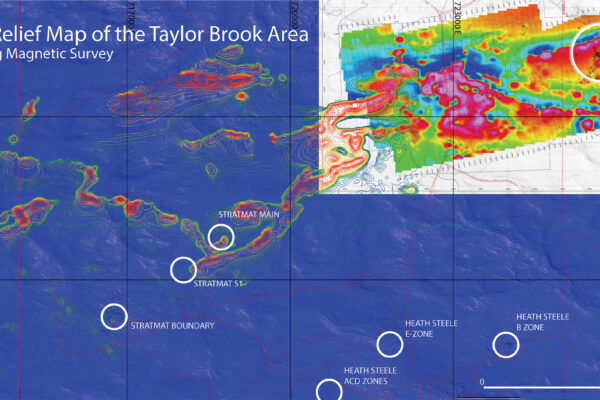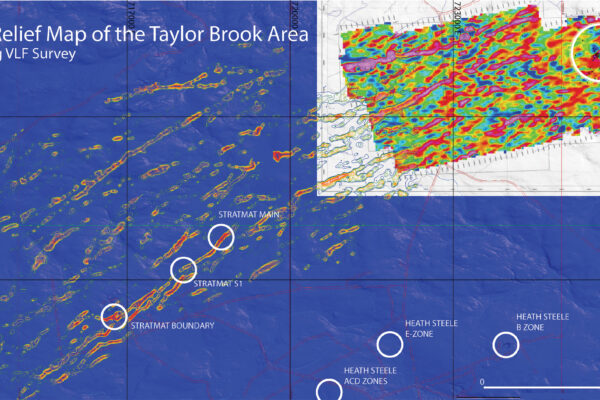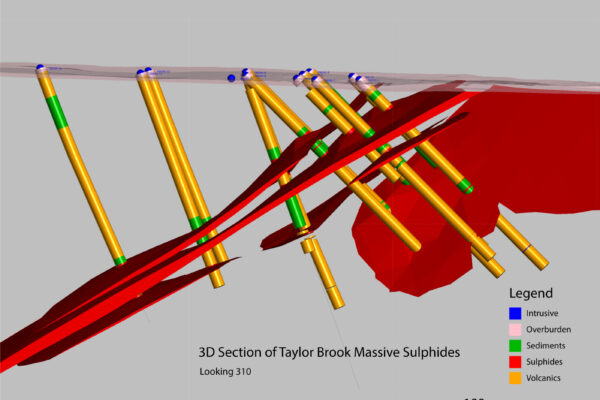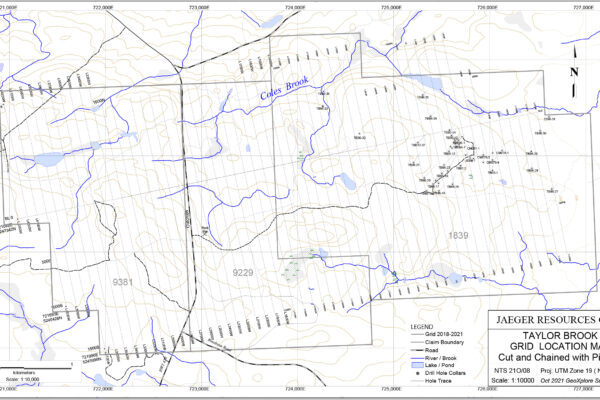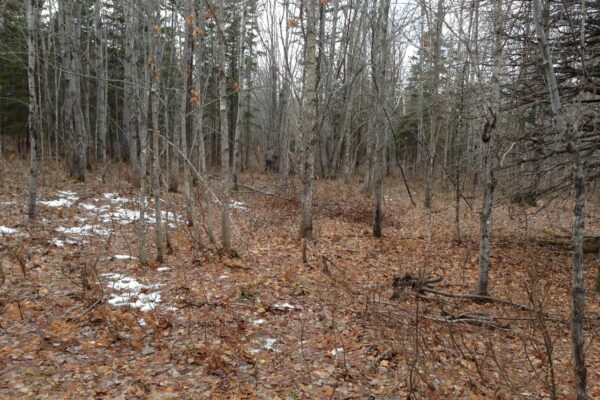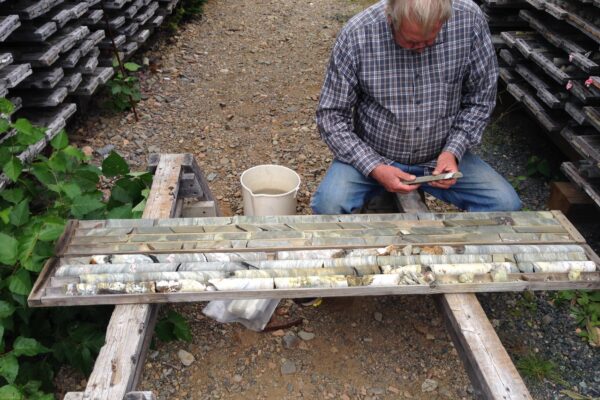The Taylor Brook Deposit and volcanogenic massive sulphide horizon has been explored by Stratabound Minerals Corp since 1987.
In 1977, Consolidated Morrison conducted an input airborne geophysical survey that identified a coincident EM and magnetic anomaly. Diamond drilling intersected the Taylor Brook base metal sulphide deposit. Follow up drilling by Sabina (1978) and Granges (1986) expanded the deposit but failed to intersect significant grades of zinc and lead.
Stratabound Minerals Corp. acquired the exploration rights to the property by entering into an option agreement in 1988. The historical exploration work was compiled and a new exploration initiative was begun. The program included line cutting, prospecting, horizontal loop EM, magnetic and extensive Induced Polarization (Dipole-Dipole resistivity) surveys. A trenching program was undertaken in the summer and lead to the delineation of a broad area of base metal sulphide mineralization near surface at the western end of the known mineralized horizon. This was interpreted to be a complex re-folded structure that may hold potential for increased grade. Teck Exploration Ltd optioned the property in 1991 and completed geological mapping and lithogeochemical surveys. Two drill holes were added to test the depth extent of the original deposit and yielded disappointing results.
In 2011, Stratabound Minerals commissioned Tetra Tech Wardrop to complete a Preliminary Economic Assessment (PEA) and Resource Estimates on their 100% owned Captain, CNE and Taylor Brook Deposits. Tetra Tech concluded that the Taylor Brook deposit warrants further investigation and development. Tetra Tech recommended that additional drilling be conducted to further investigate and develop the known Taylor Brook deposit. The deposit has not been delineated laterally to the northwest/west. The deposit requires additional work to determine if the continuity of geology and grade continue at depth and laterally to the east. Tetra Tech recommended a definition drill program of approximately 2,900 m.
Additional exploration was conducted in 2012, 2014 and 2016 that increased the level of further exploration and developing the property. Diamond drilling in 2016 intersected the two mineralized horizons that were delineated in DDH 14-39. This further increased the mineralized horizon approximately 75 metres to the south.
Jaeger Resources Corp. optioned the property (claim 1839) from Stratabound in 2017 and initiated exploration.
A new grid was cut in 2018 in in anticipation that a major IP conductor exists along a westerly trend.
A MaxMin (HLEM) survey was conducted in October, 2018 to better define the drill target anomaly over the new grid. A magnetometer and very low frequency (VLF) survey was conducted in February, 2019 to locate and define potential conductance and magnetic anomalous areas over this new grid. Several magnetometer and VLF anomalies were delineated which necessitated extending the grid to the east and west. These were followed up with magnetometer and VLF surveys in June, 2019 which also delineated several additional anomalies. The grid was again extended to the west October 2019 (40 kms), 2020 (41 kms) and 2021 (29 kms) which has been covered by magnetometer and VLF geophysical surveys.
An exploration program consisting of Horizontal Loop Electromagmetic (HLEM) geophysical survey was conducted in 2020 to follow up on the VLF and magnetometer surveys (2019, 2020) which outlined some anomalous areas of interest. The Taylor Brook deposit was also surveyed. The VLF, magnetometer and HLEM data were sent to a geophysical consultant for interpretations. Additional HLEM survey work was also conducted in 2022.
“The drill holes (mineralized area) appear to flank a magnetic anomaly. Strong VLF-EM and HLEM anomalies are also associated with the mineralized area. Based on these results, further target areas can be based on the initial VLF surveys and should be followed up with HLEM (MaxMin)”. A favourable geological setting together with results of the work done to date show that the property has the potential for additional drill untested geophysical targets.
Lithogeochemical and geometallurgical studies were carried out in 2019 , 2020 and 2021, which are important for understanding the geology, mineralization, waste rock and tailings components of any deposit and their impact on the environment and reclamation. This program also has the potential for discovering and locating additional mineralization on the property for follow up drilling.
Additional claim blocks (9229, 9381, 10264) were staked by Jaeger Resources to cover the open ground between Taylor Brook Deposit and the Stratmat Deposit property. No exploration has been conducted in these claim blocks since 1998. Limited exploration had been conducted by various companies in this area from 1957 to 1998. These claims comprise the Taylor Brook Property which now includes the Taylor Brook Deposit (claim 1839).
